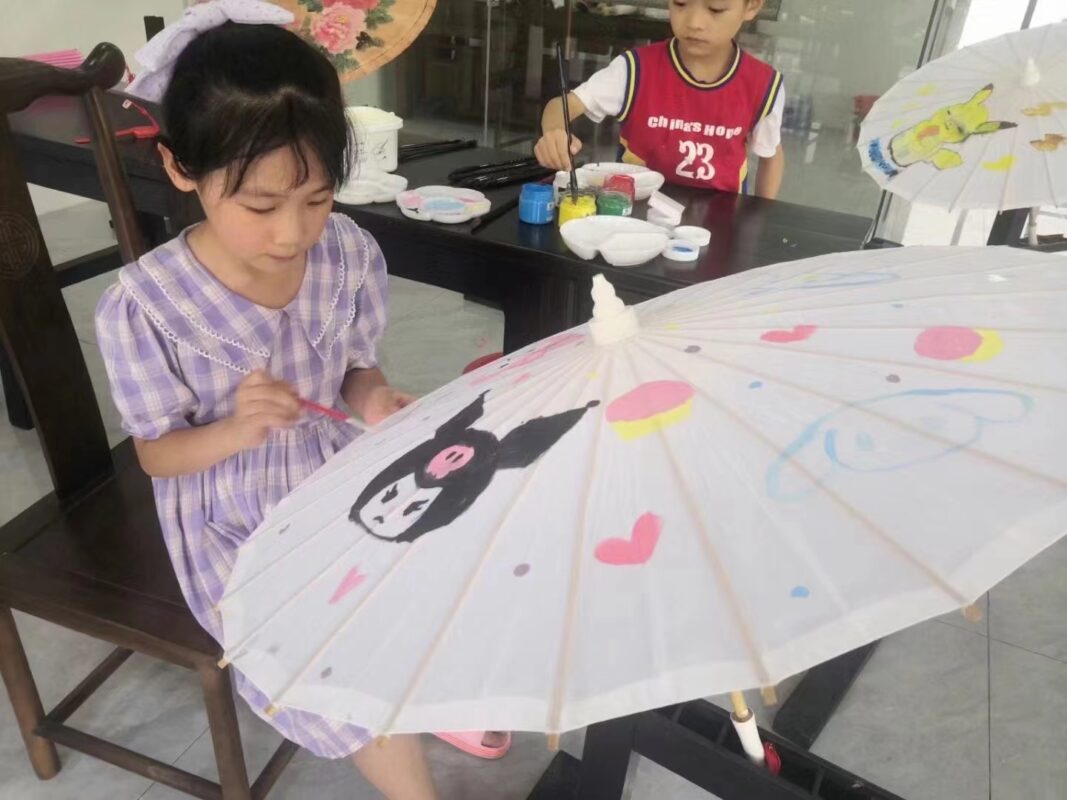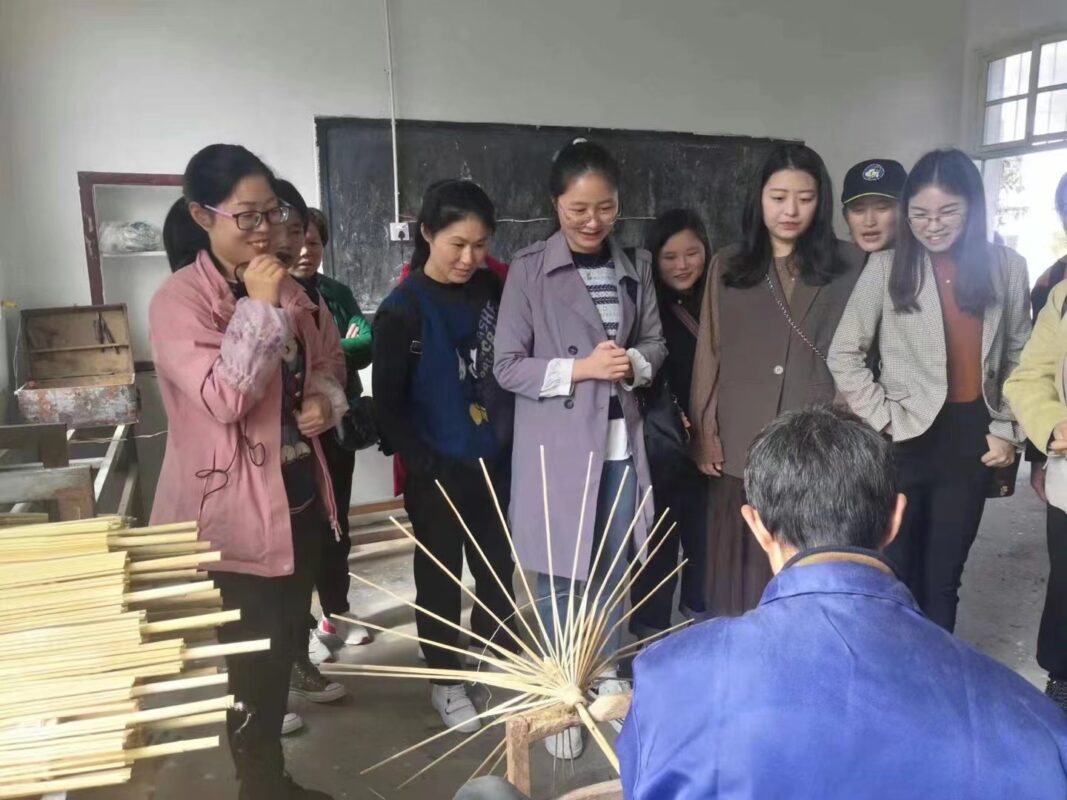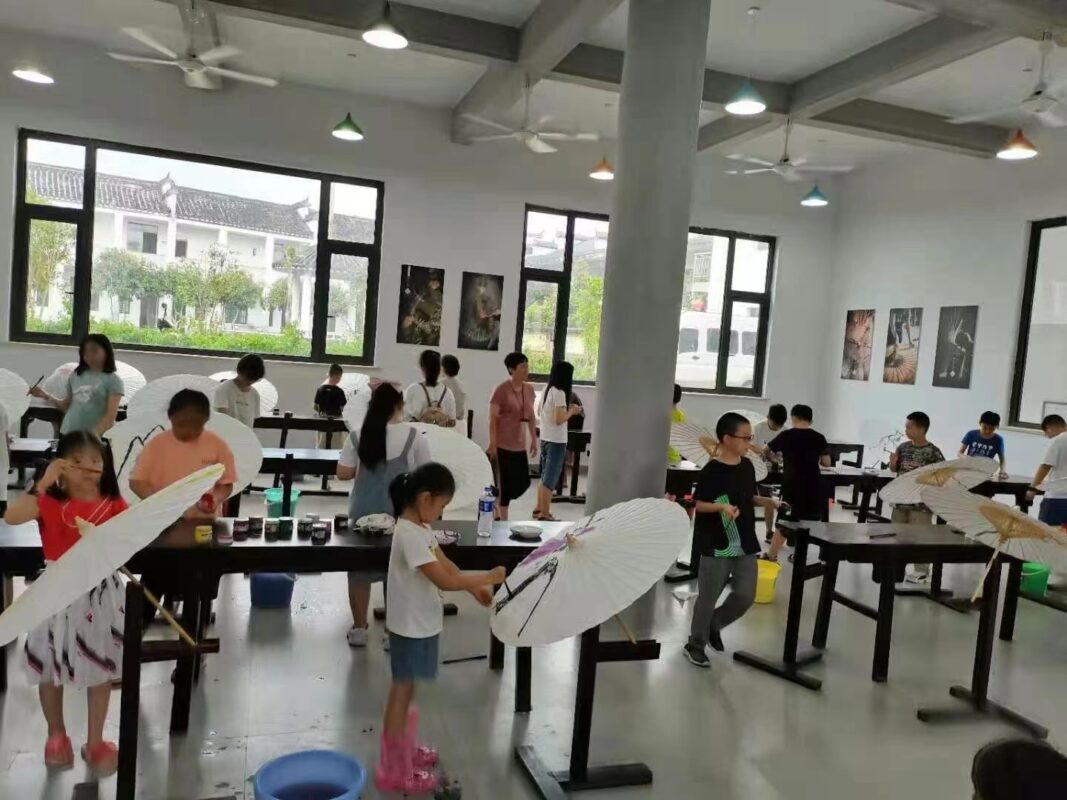Blog
White paper umbrella into the kindergarten campus
White paper umbrella into the kindergarten campus
Mobilising students’ enthusiasm for learning
In the classroom, I walked in with a blank white paper umbrella in my hand. The children were immediately excited to see it, and many of them could tell me that the teacher was holding a paper umbrella, but almost none of them could say its full name – a paper umbrella – which is a lack of traditional culture. This was a lack of traditional culture, but it didn’t dampen my confidence and I thought it was a good way to start the lesson in the face of their ignorance. I told the children that the paper umbrellas had an exclusive name: ‘white paper umbrellas’. The children showed great interest in the umbrellas in my hands and asked me if I was drawing umbrellas in this lesson. Some said, “It was used by the ancients”, others said, “It was used by dancers on stage to keep out the rain” and others said, “It was used by dancers on stage”.
Developing students’ sense of enquiry
The white paper umbrella is a traditional Chinese craft that has a history of over 1000 years, originating in China and then spreading to other Asian countries. It is the earliest umbrella in the world, made by hand from natural materials by folk artisans, and is the fruit of Chinese civilisation and wisdom. The umbrellas are made from hand-cut bamboo strips, which are then coated with natural water-resistant tung oil on a cotton paper surface. The process can be roughly divided into five steps: numbering the bamboo, making the skeleton, putting on the umbrella, painting the flowers and applying oil.
The students were asked to think of any other occasions when they had seen white paper umbrellas other than on rainy days. The students all thought of places that would have a white paper umbrella design on them, and it’s no wonder, for them it was a departure from their lives in itself. The white paper umbrella has been given many auspicious meanings and has naturally become an integral part of everyday life. As well as travelling in the rain, it is often seen in Chinese folklore in matters such as weddings and funerals. I then showed the students a board to interpret the meaning of the white paper umbrella, which they could see at a glance and naturally understood the other roles it played.
Stimulate students’ interest in inquiry
I have divided the colours of the umbrella into two sections, traditional and modern, so that younger students can distinguish and master them better. The traditional white paper umbrellas are very sophisticated in their craftsmanship and have a fixed formula for the pattern of the umbrella, so traditional Chinese paintings are often chosen, for example, the Four Gentlemen, traditional landscapes, flowers and birds. Folkloric paintings are also often chosen by craftspeople, for example, the koi carp, the five sons, and the step up in rank. When these images are given to the children, they will only know what patterns have appeared on the umbrellas, but the concept is still very vague to them, so I will categorise the images again, this time into people, animals, plants and landscapes, which will make it easier for younger children to build their knowledge framework. Modern white paper umbrellas have changed and evolved over the years, incorporating many modern elements into their original form, from traditional Chinese ink and wash paintings to modern ink and wash, and even modern designs that are entirely geometric.It is important that they are not only given a framework of knowledge, but also that they are guided to integrate their learning about umbrellas into the art classroom. In the minds of younger children, art lessons are equated with drawing and painting or crafting, and teachers can be boring when they introduce them to theoretical knowledge. By entering into this session of picture appreciation, they will not only experience the beauty of the pictures, but will also transform the pictures they see into their own creativity, focusing on the creative process of the students.
This is the first time that the younger children have painted on paper umbrellas, and there are many issues that need to be considered in advance. Firstly, let the children use their imagination and think about what they are going to draw based on the classification of the patterns on the umbrellas. Secondly, pencils can easily break the paper, so we always recommend using watercolour pencils in fluorescent yellow, which is the lightest colour and will cover any other colour, so even if you make a mistake you will hardly be able to see it. The round umbrella itself is relatively large and the composition can easily appear to be ’empty’, so with this in mind we recommend that children have an underpainting step. The underpainting will emphasise the subject matter and avoid the problem of an ’empty’ picture.
The whole lesson was very well co-ordinated and the atmosphere was relaxed. The students were very interested in the content and the different forms of painting gave them a different experience. Through the teaching of the oil paper umbrellas, the teachers not only developed the awareness of the younger pupils to explore the beauty of traditional culture, but also developed their ability to perceive, appreciate and create beauty. By painting on the umbrellas, the pupils were able to appreciate the hard work of the folk artisans and understand that there is a long way to go to preserve and pass on culture.




